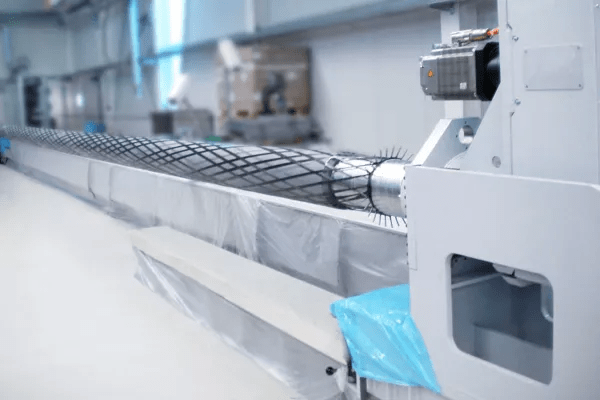Understanding Filament Winding Resin
Filament winding resin is a type of thermosetting polymer resin specifically designed for use in the filament winding process, a composite manufacturing method used to produce high-strength, lightweight, and corrosion-resistant cylindrical or spherical products.
During the process, continuous fibers (usually glass, carbon, or aramid fibers) are impregnated with resin and wound onto a rotating mandrel in precise patterns. After curing, the resin forms a rigid matrix that binds the fibers together, providing mechanical strength and protection from environmental or chemical damage.
Unlike thermoplastic materials, filament winding resins cannot be re-melted once cured. This ensures high dimensional stability, excellent load-bearing capacity, and long-term durability even under extreme temperature or chemical conditions.

Key Properties of Filament Winding Resin
A high-quality filament winding resin provides a combination of physical, chemical, and thermal properties, including:
- High tensile and flexural strength for structural integrity
- Strong adhesion to glass or carbon fibers
- Outstanding corrosion and chemical resistance
- Excellent thermal and dimensional stability
- Controlled viscosity and reactivity for consistent fiber impregnation
- Flame and heat resistance for industrial and marine environments
These properties make filament winding resins an essential material in advanced composite production.
Types of Filament Winding Resins
There are several types of resins used in filament winding, each suited to specific application requirements:
1. Unsaturated Polyester Resin (UPR)
A cost-effective resin with good mechanical strength and easy processing.
Ideal for general-purpose FRP pipes, tanks, and housings.
2. Vinyl Ester Resin (VER)
Offers exceptional corrosion resistance and higher toughness than polyester.
Commonly used in chemical storage tanks, pipelines, and marine environments.
3. Epoxy Resin
Known for superior adhesion, fatigue resistance, and dimensional accuracy.
Used in aerospace, defense, and high-pressure vessels.
4. Phenolic Resin
Provides outstanding flame and heat resistance, often used in fire-retardant composite applications.
Applications of Filament Winding Resin
Filament winding resins are used across multiple industries that require high-performance composite structures:
- Industrial Equipment: Chemical tanks, pressure vessels, and process containers
- Pipeline Systems: FRP and GRP pipes for water, oil, and chemical transport
- Aerospace: Fuel tanks, rocket motor casings, and structural shells
- Marine: Lightweight, corrosion-resistant ship components
- Energy & Environment: Hydrogen storage tanks and wind turbine components
These applications demonstrate how filament winding resins combine lightweight design, mechanical strength, and chemical durability in modern engineering.
Advantages of Using Filament Winding Resins
Compared to metals and traditional plastics, filament winding resins offer significant advantages:
- Up to 70% weight reduction compared to steel
- Non-corrosive in acidic, saline, or chemical conditions
- Low maintenance and long service life
- High automation compatibility and reproducibility
- Customizable resin formulations for different mechanical or thermal requirements
As a result, filament winding composites are replacing metals in industrial, marine, and infrastructure applications.
How to Select the Right Filament Winding Resin
When choosing a filament winding resin, engineers should consider:
- Operating temperature and environmental exposure
- Chemical compatibility with transported media
- Mechanical requirements such as tensile or compressive strength
- Processing parameters like curing time, viscosity, and flow behavior
- Cost-performance ratio based on production scale
Proper resin selection ensures optimized performance and long-term stability in composite parts.
The Future of Filament Winding Technology
The demand for sustainable, high-performance composite materials is rapidly increasing in aerospace, hydrogen energy, transportation, and water treatment sectors.
Future resin systems will focus on low-styrene emissions, faster curing, and recyclable matrix systems, supporting global goals for lightweight and eco-friendly manufacturing.
